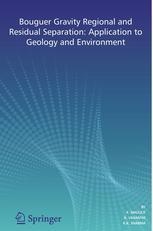

Most ebook files are in PDF format, so you can easily read them using various software such as Foxit Reader or directly on the Google Chrome browser.
Some ebook files are released by publishers in other formats such as .awz, .mobi, .epub, .fb2, etc. You may need to install specific software to read these formats on mobile/PC, such as Calibre.
Please read the tutorial at this link: https://ebookbell.com/faq
We offer FREE conversion to the popular formats you request; however, this may take some time. Therefore, right after payment, please email us, and we will try to provide the service as quickly as possible.
For some exceptional file formats or broken links (if any), please refrain from opening any disputes. Instead, email us first, and we will try to assist within a maximum of 6 hours.
EbookBell Team

4.4
82 reviewsThe process of regional-residual separation in potential field is age-old. Broadly, there are two techniques for regional-residual resolution, viz., graphical and analytical. Both the techniques have their own respective shortcomings. In this book, the authors have described the technique based on finite element method in which only eight (or twelve) nodal observed gravity values are used for the regional computation, thereby eliminating the possible contamination of anomalous fields and also the technique does not assume an explicit model and physical properties like density of rocks etc. in the regional computation. The book discusses the advantages of this technique viz., it is not site-specific; the computation is independent of any prior assumptions as to the form and depth of shallow or deeper structures; it can handle data distributed at random or on a regular grid on the map space; and the neighbouring surveys join smoothly.
The book focuses on application of this new technique which has been demonstrated in different fields, such as hydrocarbon, minerals and groundwater, structural studies, earthquake and engineering studies and impact structures.